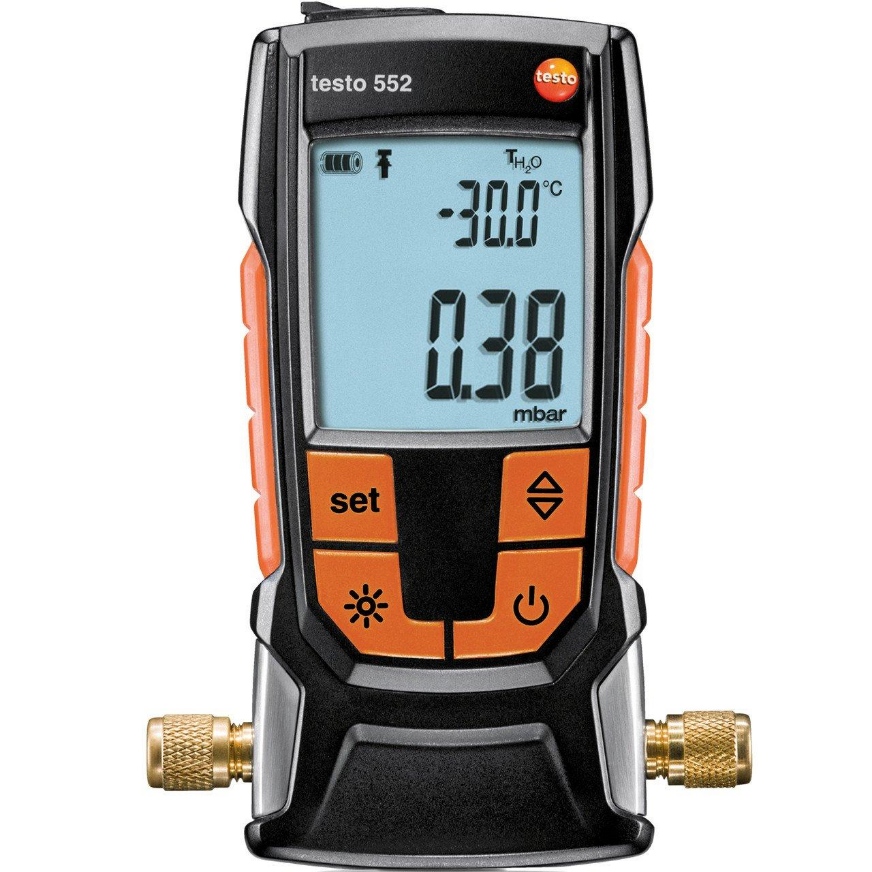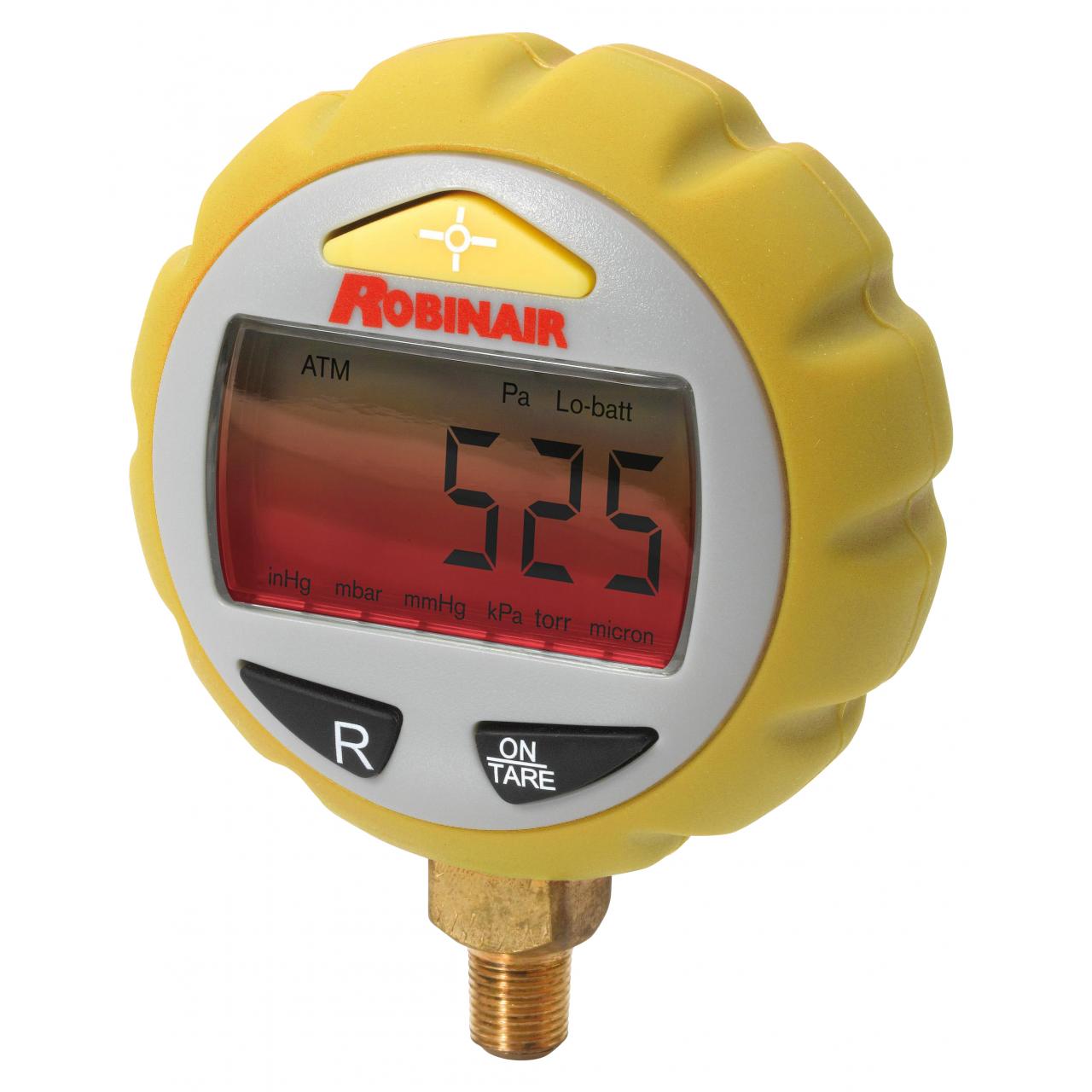
Vacuum pumps, vacuum lines, and chambers may all be tested with ease using the vacuum pump and gauges.
In both the home and the workplace, air conditioning is a must. A well-functioning air conditioning system keeps high temperatures and heat at bay. You must regularly check the vacuum and dehydration levels for a conditioning system to remain effective. You can quickly and accurately measure these levels with the help of a vacuum pump and gauges.
Vacuum Gauge
A vacuum gauge measures the pressure within an air conditioner. As needed, it can also measure the liquid gas's total output and intake and the vacuum level in microns.
On the other hand, most vacuum gauges have an analog display instead of a digital display. As a result, a vacuum gauge serves the same purpose as a pressure gauge but has a different name.
Likewise, the precision is exceptional, and you may utilize it for several other tasks. Due to its sturdy structure, it can last decades.
A common HVAC professional uses a vacuum gauge to measure microns on an air conditioning unit.
Micron Gauge
A micron meter is an instrument that measures how much vacuum or evacuation is present in a system. It also monitors the dehydration and degassing of various appliances, such as air conditioners, refrigerators, and deep freezers. The instrument is also used to measure vacuum in motor engines by some persons.
The absolute vacuum is measured with mercury. Microns are the units of measurement for vacuum; 1,000 microns equals 1 millimetre of mercury.
Because the tool's principal purpose is to determine the vacuum level in a system or a unit, it's also known as a vacuum gauge.
Guide in Buying a Good Micron Gauge
Purchasing a micron gauge that does not provide precise and accurate readings is not only a waste of money. It may also have long-term effects on your devices due to erroneous readings. As a result, it is critical to exercise caution when selecting one.
There are a few things to think about before purchasing a micron gauge.
Accuracy
A micron gauge's precision is the most important indicator of its quality and function. As a result, it may be a means of ensuring quality. However, there is no method to determine a micron gauge's accuracy and precision. The easiest way to be sure of is to purchase a meter that has been certified by the National Institute of Standards and Technology (NIST). Only once the item has met a set of criteria is certification provided.
Quality
What value is a device if it doesn't have a user-friendly design and a long-lasting build? If you plan to use your micron gauge in the workshop or for other difficult tasks, you should choose something that is both durable and sturdy.
Although most micron gauges from reputable brands are built to last, not every micron gauge is water and dust resistant. As a result, pick your micron gauge carefully based on your requirements.
Micron gauges rarely present problems in terms of design. They come in various sizes, so choose a little one if you want something compact and easy to carry.
Maintenance
Dirt is a micron gauge's toughest enemy, regardless of which model or brand you choose. It has the potential to degrade not only the device's performance but also its precision and accuracy.
Each micron gauge has its unique set of instructions for maintenance. You don't want a tool that needs to be cleaned every 20 to 30 minutes after each operation. It will be handier to choose a simple device to maintain and clean.
Display and Smartphone Feature
There are two types of displays available on Micron Gauges: analog and digital. Analog displays are old-fashioned, while digital displays offer larger fonts and are simpler to see in comparison. They also make it simple for users to swap between different units.
Smart micrometre meters appear to be gaining traction. These gauges may link to smartphones via a brand-specific app, allowing users to save and view all of the data collected by the gauge previously.
Traditional micron gauges cannot perform several smartphone communication and networking functions.
Connectivity
You must confirm the device compatibility of a micron gauge before connecting it to it, whether via wires or Bluetooth. Because every device has a different connection size, check sure the micron gauge you want to use is compatible with the machine(s) you need it with before you buy it.
Micron Vacuum Gauge Types
Ultrasonic Micrometre
An ultrasonic micrometre measures the time it takes for an ultrasonic wave to bounce back after being emitted onto an item. The thickness is calculated using the sound speed in the material, and the time it takes for reflection. Time of Flight (TOF) measurement is another term for this. Ultrasonic micrometres are useful for measuring the thickness of materials with complicated forms that are difficult to gauge with conventional gauges.
Optical Micron Gauge
An optical micron gauge measures the thickness of an object by measuring the shadow left by the material using laser light beams. The visual micron gauge creates a picture of the material thickness using a tiny laser beam. This type of micron gauge works quickly and can measure across die cuts in the paper.
Laser Micrometres
The laser micrometre works the same way as an optical meter, but it measures with lasers instead of a light beam. Laser micrometres can take more than 50,000 measurements per second and create reading errors of less than.001 per cent.
Using a Micron Gauge
A micron gauge is a handy instrument to help your equipment last longer. It enables the user to locate pressure reading changes quickly. A micron gauge might produce skewed readings if not used appropriately despite its usefulness.
It completes the evacuation process by eliminating non-condensable mediums such as air moisture. Here's how to use a micron gauge step by step:
First: The first step is to set up the system.
- Remove two sides of the system's core valves.
- Connect the core tools to the large-diameter vacuum rate hose.
- Using the manifold gauge, connect the hose to the vacuum pump.
Second: Make a Vacuum
- Reduce the pressure after you've opened all the valves.
- Ascertain that the gauge is not connected to the pump. Gas permeation will occur if this is not done.
- Reduce the pressure to 300 or 400 microns. Close the valves on the high and low sides of the system once that level is reached.
Third: Gauge Installation
- Attach the gauge to the suction line at the heart of the system. The use of a copper line and a brass connector is recommended.
- It will take anything from 5 to 20 minutes for the pressure to balance once connected.
- In this phase, make sure you know how much moisture is in the system.
Fourth: Oil Change
- It's critical to change the oil after you obtain your reading. The oil absorbs moisture, leading to inaccurate results in the future.
- Make sure you replenish the oil while it's still warm.
Because your pump, valves, and hoses can accumulate moisture over time, it's a good idea to maintain them clean.
HVAC Vacuum Pump and Gauges in Australia
You can buy HVAC Vacuum Pump and Gauges in Australia from HVAC Shop. We offer high-quality products that will help air conditioner maintenance a breeze.
HVAC Shop has experts ready to answer your queries, so don't hesitate to call us today!




